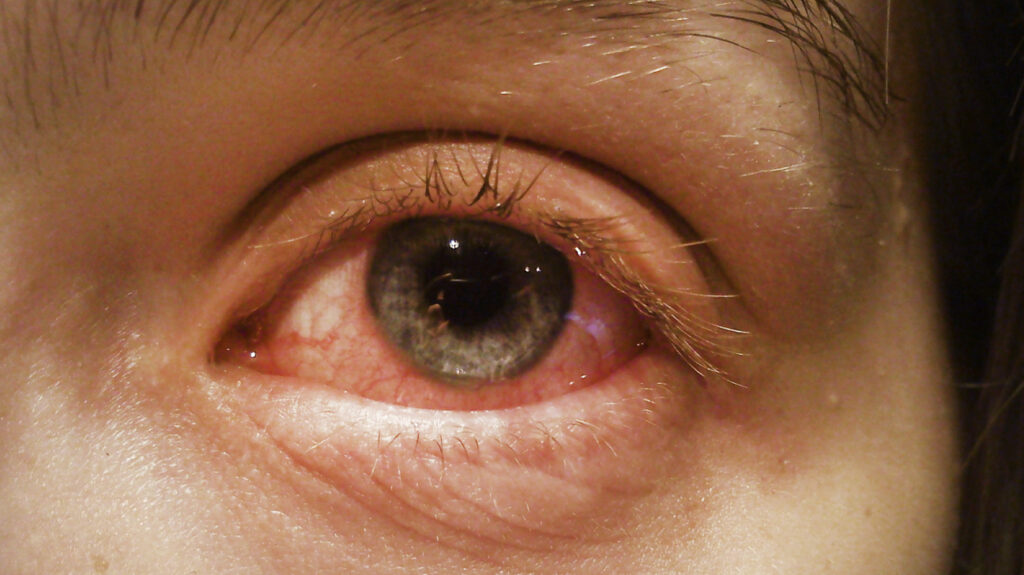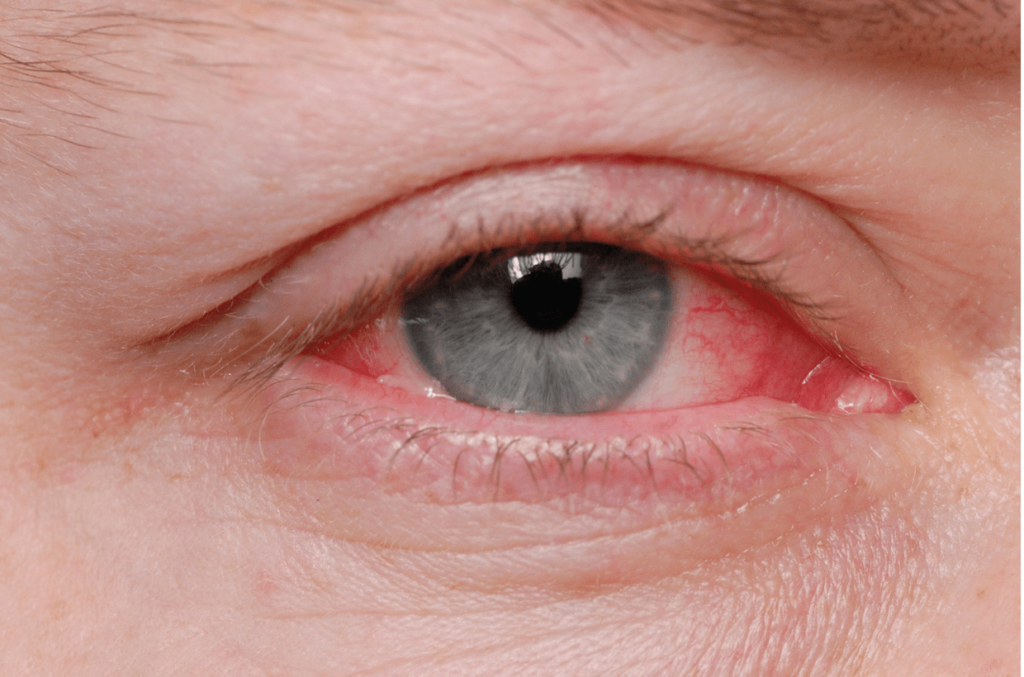What Is Commonly Misdiagnosed as Pink Eye?
What is commonly misdiagnosed as pink eye? Pink eye, also known as conjunctivitis is an occurring eye ailment characterized by redness, itching and eye discharge. Nonetheless there exist eye conditions that can present similar symptoms to pink eye resulting in misdiagnosis and inappropriate treatment.
What Is Mistaken for Pink Eye?
Numerous eye problems can result in redness, discomfort and discharge often causing individuals to believe they are experiencing eye. Some of the most common conditions mistaken for pink eye include:

Dry Eye Syndrome
When your eyes don’t make tears or the tears dry up fast it leads to dry eye. This can result in redness, itching, burning sensation and a gritty feeling, in the eyes. Dry eye is sometimes confused with eye as they share symptoms.
Allergies
Allergic reactions can cause the eyes to become red, itchy, and watery. This is often mistaken for pink eye, but unlike bacterial or viral conjunctivitis, allergies do not cause thick, sticky discharge.
Blepharitis
Blepharitis refers to an inflammation of the eyelids that may lead to redness, itching and flaking of the skin surrounding the eyes. It is often misdiagnosed as pink eye because it can cause similar symptoms.
Stye
A stye is an painful bump that forms, on the eyelid due, to an oil gland. It can make the eye feel tender and appear red, which may lead individuals to mistake it for eye.
Corneal Abrasion
A corneal abrasion refers to a scratch, on the eyes surface that can lead to redness, discomfort and sensitivity to light. It might be confused with eye. Unlike conjunctivitis a corneal abrasion typically impacts just one eye.
Can Pink Eye Be Mistaken for Something Else?
Sometimes pink eye can be confused with eye conditions and vice versa. For example, non-bacterial pink eye caused by a virus may be misdiagnosed as a bacterial infection and treated with antibiotics, which will not be effective.
Pink eye can sometimes be confused with eye issues such, as uveitis or glaucoma. Uveitis involves inflammation in the layer of the eye leading to symptoms, like redness, discomfort and vision changes. Glaucoma encompasses a set of eye disorders that harm the nerve and may result in vision impairment.

What Can Be Mistaken for Pink Eye?
In addition to the conditions similar to pink eye mentioned above, there are a few other eye issues that may be mistaken for pink eye:
Subconjunctival Hemorrhage
A subconjunctival hemorrhage refers to a blood vessel, in the eye resulting in a red spot, on the white part of the eye. While it may appear concerning it is typically harmless. Tends to resolve without intervention. However, it is often one of the things mistaken for pink eye.
Iritis
Inflammation of the iris, known as iritis can lead to redness, discomfort and sensitivity to light. It may be confused with eye. Is actually a more severe condition that needs immediate treatment to prevent harm to vision.
Keratitis
Keratitis refers to the inflammation of the cornea, which’s the front portion of the eye. Symptoms may include redness, discomfort, vision blurriness and sensitivity, to light. Keratitis can sometimes resemble pink eye symptoms, but is usually more painful and can lead to vision loss if left untreated.
How Common Is Pink Eye in Adults?
Pink eye is an issue impacting millions of individuals annually. Although its commonly found in kids adults also experience eye frequently. The Centers, for Disease Control and Prevention (CDC) reports 3 million instances of eye, in the U.S. Annually with a considerable number of cases occurring in adults.
Viral conjunctivitis, the most common type of pink eye in adults, is highly contagious and can spread rapidly in schools, workplaces, and other crowded settings. Bacterial conjunctivitis is an occurrence,, among individuals who use contact lenses or have compromised immune systems.

How Is Pink Eye Diagnosed and Treated?
If you suspect that you might have eye it’s essential to visit an eye specialist, for a diagnosis and appropriate treatment. The specialist will carefully assess your eyes. Inquire about your symptoms to ascertain whether you indeed have eye or another eye related issue.
If you have bacterial pink eye, your doctor may prescribe antibiotic eye drops or ointment to clear the infection. Pink eye caused by a virus doesn’t get better with antibiotics. Your doctor might suggest using prescription treatments to help ease the symptoms until the virus clears up.
For other eye conditions mistaken for pink eye, treatment will vary depending on the specific issue. Dry eyes can be managed with tears or prescribed eye drops while allergies may improve with antihistamine eye drops or oral medications. Treating blepharitis might involve using compresses cleaning the eyelids and taking antibiotics whereas a stye may necessitate drainage by a professional.
Is Mild Pink Eye Contagious?
People often wonder if mild cases of eye can still be contagious. The answer is affirmative. With symptoms you can transmit pink eye to others. Viral and bacterial pink eye are both highly contagious and can spread through direct contact with an infected person or exposure to their eye secretions.
To prevent the spread of eye it’s crucial to maintain hygiene habits, like regular handwashing and refraining from touching your eyes. If you’re experiencing eye symptoms it’s best to stay from work or school until you’re fully recovered to prevent spreading the infection to others.

What Mimics Pink Eye?
As we’ve seen, there are several eye conditions that can mimic pink eye symptoms. Some of the most common pink eye mimics include:
Viral Keratitis
Corneal infection, by viruses like herpes simplex or varicella zoster, known as keratitis may lead to symptoms such as redness, sensitivity to light, pain and blurred vision. While it shares similarities, with eye viral keratitis typically impacts one eye and can result in more intense pain and vision disturbances compared to pink eye.
Fungal Keratitis
Fungal keratitis is a corneal infection triggered by fungi, like Aspergillus or Fusarium. It can cause symptoms similar to bacterial pink eye, such as redness, discharge, and light sensitivity. Fungal keratitis tends to cause pain. May result in vision impairment if not addressed promptly.
Uveitis
Uveitis, as previously discussed refers to an inflammation of the eyes layer leading to symptoms such, as redness, discomfort and alterations, in vision. Anterior uveitis, which affects the front part of the eye, can sometimes mimic pink eye symptoms. However, uveitis is usually more painful and can cause blurred vision and light sensitivity.
Dacryocystitis
Dacryocystitis is a condition where the tear drainage system gets infected leading to redness swelling and discharge in the corner of the eye. It might be confused with eye. Unlike conjunctivitis dacryocystitis typically impacts just one eye and can result in a painful bump or swelling close, to the nose.

What Can Pink Eye Be Mistaken For?
Pink eye can be confused with eye issues. Its crucial to note that authentic pink eye refers to a distinct form of conjunctivitis triggered by viruses or bacteria. Some of the conditions that can be misidentified as pink eye are;
Allergic Conjunctivitis
Allergic conjunctivitis, also known as eye due, to allergies occurs when the eyes react to allergens such, as pollen, pet fur or makeup. It may lead to redness, itching and watery discharge resembling symptoms of bacterial eye. Unlike forms of eye allergic conjunctivitis typically impacts both eyes.
Giant Papillary Conjunctivitis
People who use contact lenses may experience conjunctivitis (GPC) a form of allergic conjunctivitis. It causes red, bumpy patches on the underside of the eyelids and can be mistaken for pink eye. However, GPC is not contagious and is usually associated with contact lens wear.
Trichiasis
Trichiasis is a problem where the eyelashes grow inward and rub against the eyes surface. It can lead to redness, irritation and discharge that might look like symptoms of eye.. Remember trichiasis doesn’t spread from person to personand typically impacts just one eye.
Eye Injury
Eye injuries such as corneal abrasions or foreign bodies in the eye can cause redness, pain, and tearing that may be mistaken for pink eye. However, eye injuries are not contagious and usually affect only one eye.

Are There Other Eye Infections Besides Pink Eye?
There are eye infections apart, from eye that people can experience. Some common ones include;
- Blepharitis; This is an inflammation of the eyelids that may lead to redness, itching and flaking skin. It is often triggered by infections or excessive oil production by the glands on the eyelids.
- Stye; A stye is a bump on the eyelid caused by an infection in the oil glands typically due to Staphylococcus aureus bacteria.
- Keratitis; The inflammation of the cornea known as keratitis can result from bacteria, viruses, fungi or parasites. Symptoms may include redness, pain, blurred vision and sensitivity to light.
- Endophthalmitis; This rare but severe infection affects the interior of the eye. Can occur after eye surgery or injury. It presents symptoms such, as pain, redness, vision impairment, necessitating treatment to prevent permanent harm.
What Is the Virus That Looks Like Pink Eye?
Adenovirus, a type of virus is often responsible, for causing eye. It belongs to a group of viruses that can lead to health issues such, as infections, stomach flu and eye infections.
Adenoviral conjunctivitis, also known as epidemic keratoconjunctivitis (EKC), is a highly contagious form of pink eye that can spread rapidly in schools, workplaces, and other crowded settings. It usually begins in one eye and then spreads to the other eye within a few days.
Signs of conjunctivitis may involve;
- Redness and puffiness of the conjunctiva
- Watery discharge
- Sensation of sand or grit, in the eye
- Sensitivity to light
- Blurry vision
Adenoviral conjunctivitis often persists for a weeks and tends to be more severe compared to other forms of pink eye. There isn’t a cure for pink eye but symptoms can be eased using non prescription remedies such, as artificial tears and cold compresses.

Do I Have Pink Eye or Is My Eye Just Irritated?
It can be tricky to distinguish between eye and a simple eye irritation. Some signs that could indicate eye are;
- Redness, in one or both eyes
- Thick discharge that forms crusts on the eyelashes
- Feeling of itchiness or burning in the eyes
- Swollen eyelids
- Sensitivity to light
If you experience these symptoms it’s advisable to consult an eye doctor for an accurate diagnosis and appropriate treatment. However if you only have redness or irritation without any discharge or other accompanying symptoms it might be related to an issue, like dry eyes or allergies.
Will Bacterial Pink Eye Go Away On Its Own?
Pink eye caused by bacteria may resolve spontaneously in a week or two. Its crucial to consult a healthcare provider, for accurate diagnosis and treatment. Antibiotics can expedite recovery. Reduce the risk of infecting others.
If left untreated, bacterial pink eye can lead to more serious complications such as corneal ulcers or vision loss. It can also spread rapidly in schools and workplaces, causing outbreaks of infection.

How To Tell The Difference Between Pink Eye And A Cornea Infection?
Pink eye and corneal infections, like keratitis can sometimes display symptoms. There are distinct differences to watch out for;
- Pain; Corneal infections typically cause more discomfort than pink eye often accompanied by a sensation of something lodged in the eye or intense pain when exposed to bright lights.
- Vision changes; Corneal infections may lead to blurred vision seeing halos around lights or light sensitivity whereas pink eye generally does not impact vision.
- Discharge; Pink eye commonly results in discharge that forms crusts on the eyelashes whereas corneal infections may result in watery or mucus like discharge.
- Location; Pink eye commonly affects the conjunctiva. The transparent membrane covering the white part of the eye. While corneal infections target the cornea. The clear front portion of the eye.
If you experience pain vision alterations or unusual symptoms it’s crucial to seek evaluation and treatment, from an ophthalmologist.
How Do You Know The Difference Between Pink Eye And A Bacterial Infection?
Pink eye can result from either viruses or bacteria making it challenging at times to distinguish between bacterial conjunctivitis. However there are indicators that can assist in this differentiation;
- Discharge; Bacterial pink eye typically leads to sticky discharge that may crust on the eyelashes whereas viral pink eye commonly presents with watery discharge.
- Severity; Bacterial pink eye may exhibit symptoms such, as increased redness, swelling and discomfort compared to viral pink eye.
- Duration; Viral pink eye often resolves spontaneously within a week or two whereas bacterial pink eye might persist longer without intervention.
- Spread; Bacterial pink eye tends to be more contagious, than eye and can swiftly spread in school and workplace environments.
However, the only way to know for sure if you have bacterial pink eye is to see an eye doctor for proper diagnosis. Your physician might collect a specimen of the fluid, from your eye to check for bacteria and decide on the treatment plan.
Pink eye is an eye ailment that is sometimes mistaken, for eye problems because of its resemblance to various conditions such, as dry eye syndrome, allergies, viral keratitis and uveitis. By being aware of these conditions similar to pink eye and seeking proper diagnosis from an eye care professional, you can ensure that you receive the appropriate treatment for your specific eye concern. It’s important to keep in mind that a quick and precise diagnosis is essential, for keeping your eyes healthy and avoiding any issues.
